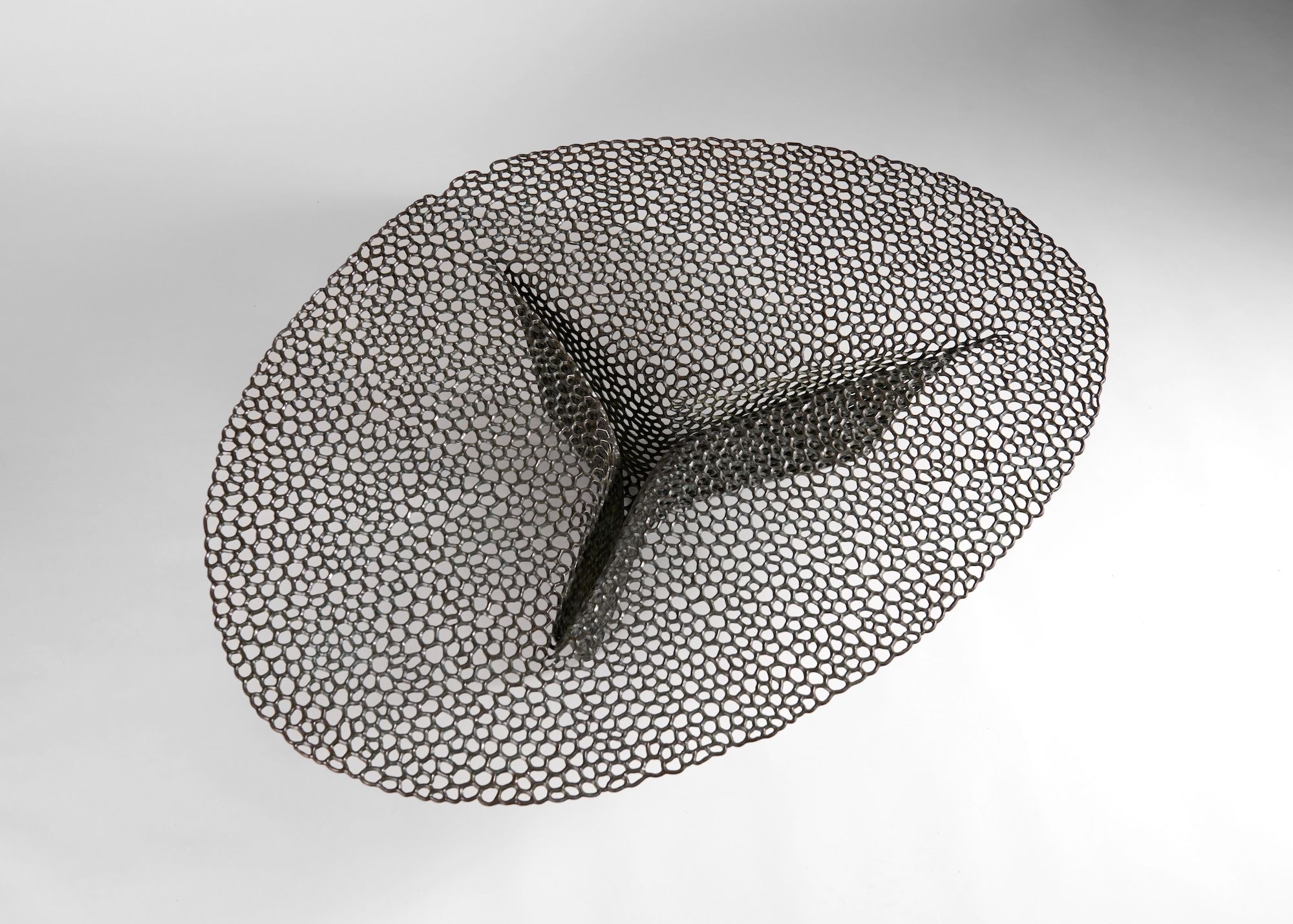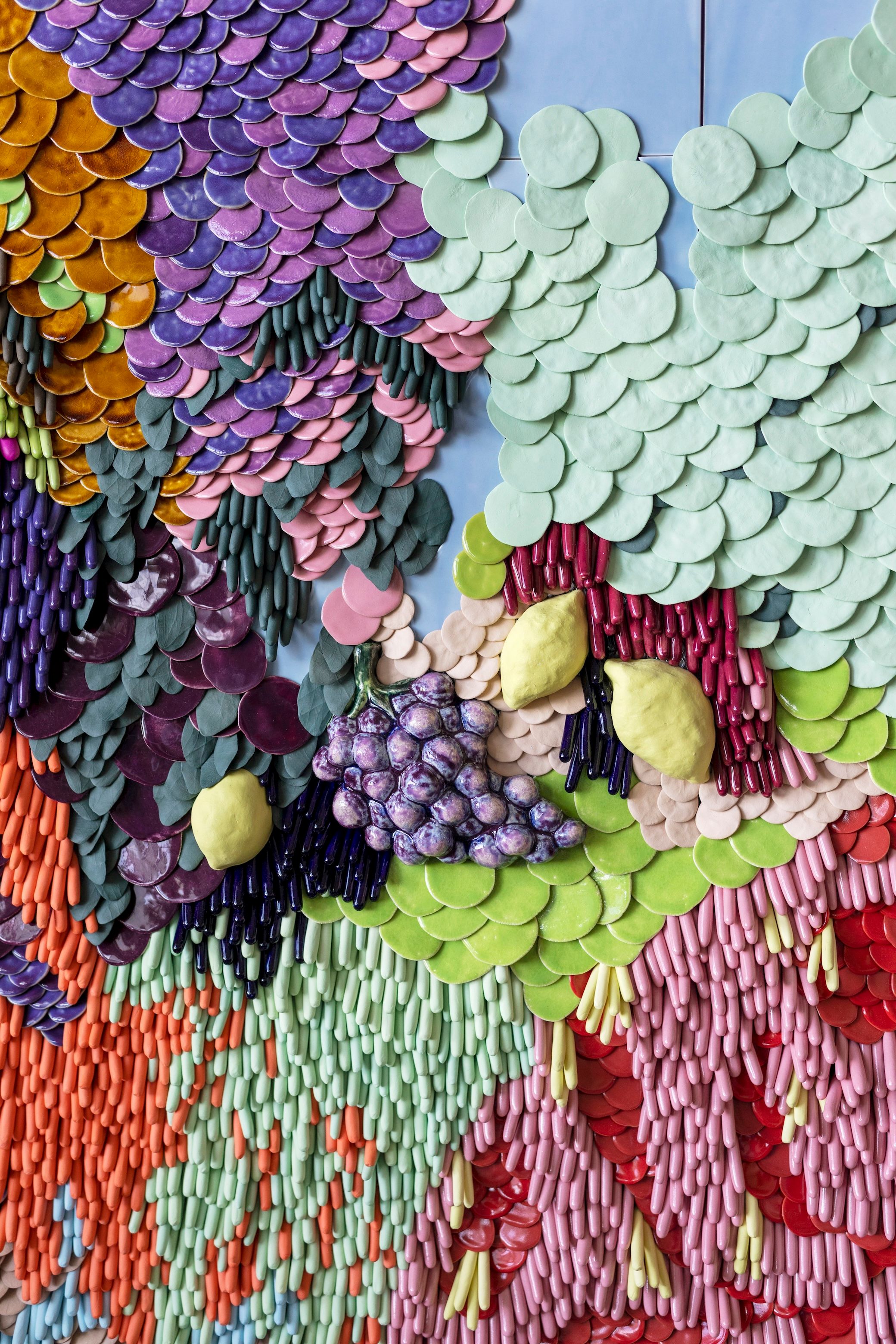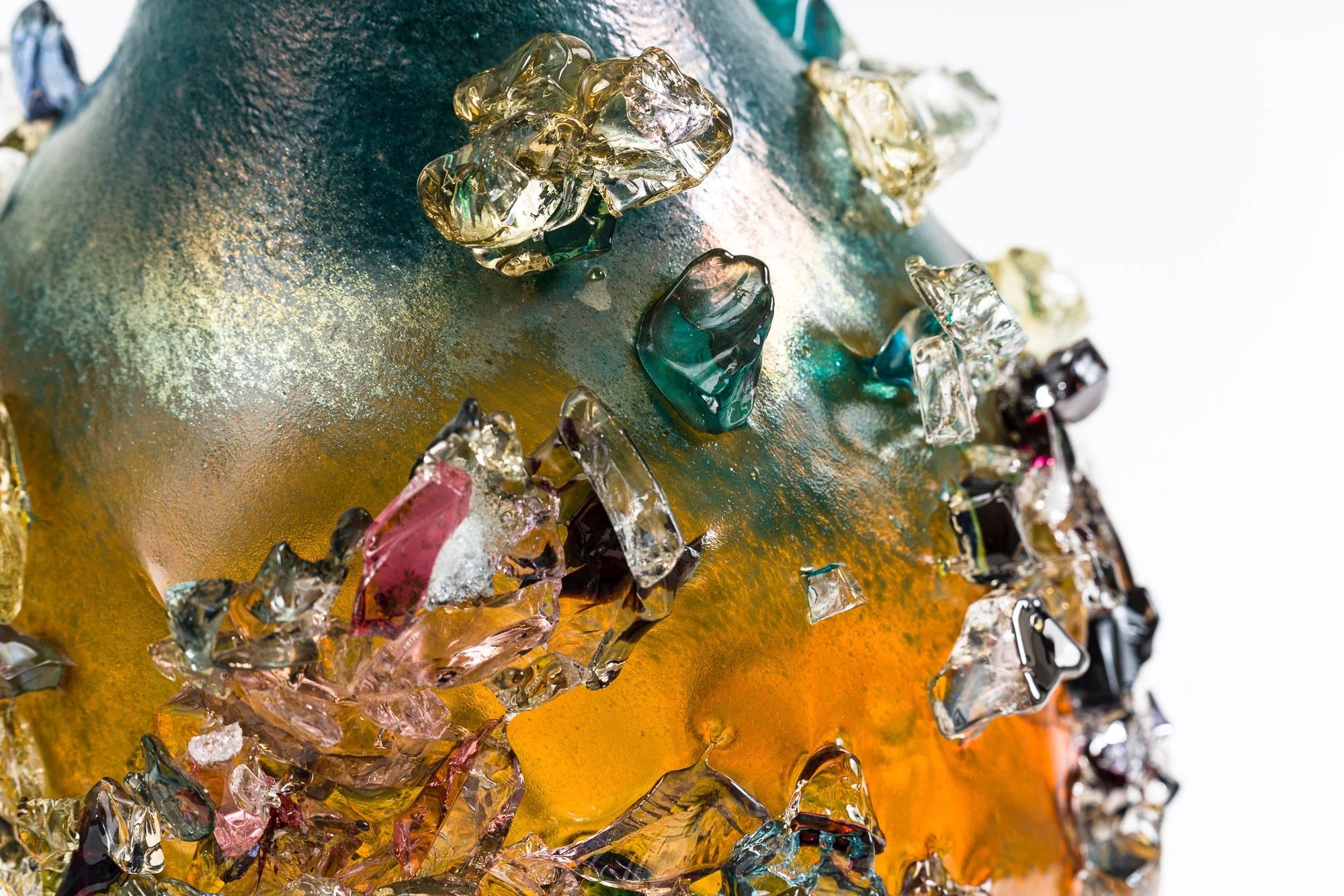OBJECT OF MY AFFECTION JUNE 15 2023
by Wava Carpenter
10 designs that embody the transformational design culture of the ’80s and ’90s
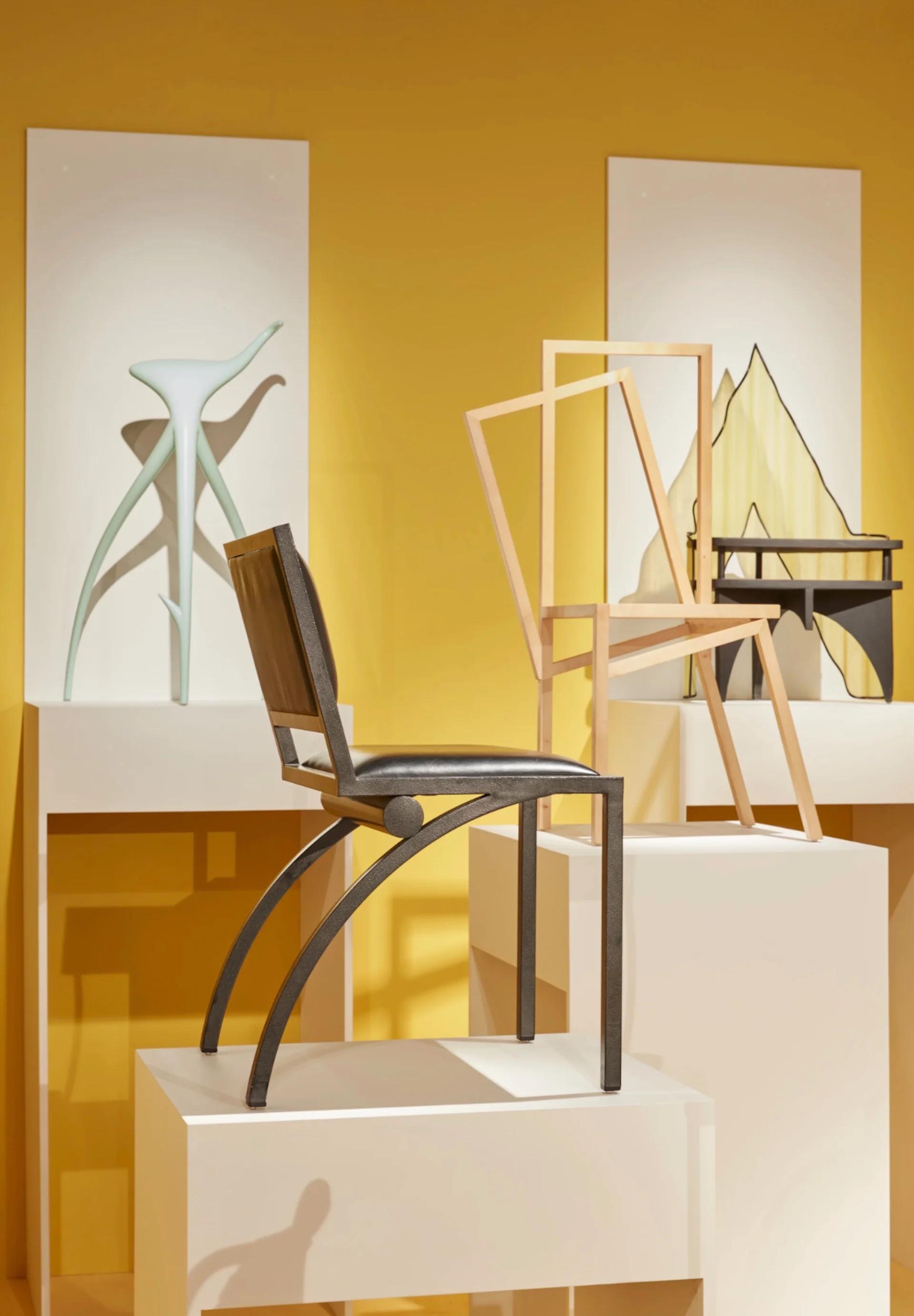
KETABI BOURDET AT DESIGN MIAMI/ BASEL 2023, FEATURING PHILIPPE STARCK'S TABOURET W.W. (1990), JEAN-MICHEL WILMOTTE'S CYLINDER CHAIR, 1983, MORELLET & MORELLET'S PAIRE-LA-CHAISE, C. 1998, AND BÉCHEAU & BOURGEOIS' CHAIR N°4, 1982
Photo © Ketabi Bourdet
One of the most exciting threads running through this year’s Design Miami/ Basel is the exceptional representation of design from the 1980s and ’90s. Too often overshadowed by the golden age of mid-century modernism that preceded it, the last two decades of the 20th century set in motion so much of what defines design culture today.
A tour through our current fair—in particular, the installations mounted by Friedman Benda, Galerie Gastou, Jousse Entreprise, Ketabi Bourdet, and Mouvements Modernes—proves that this visionary, boundary-busting creative era is long overdue for the full appreciation it deserves.
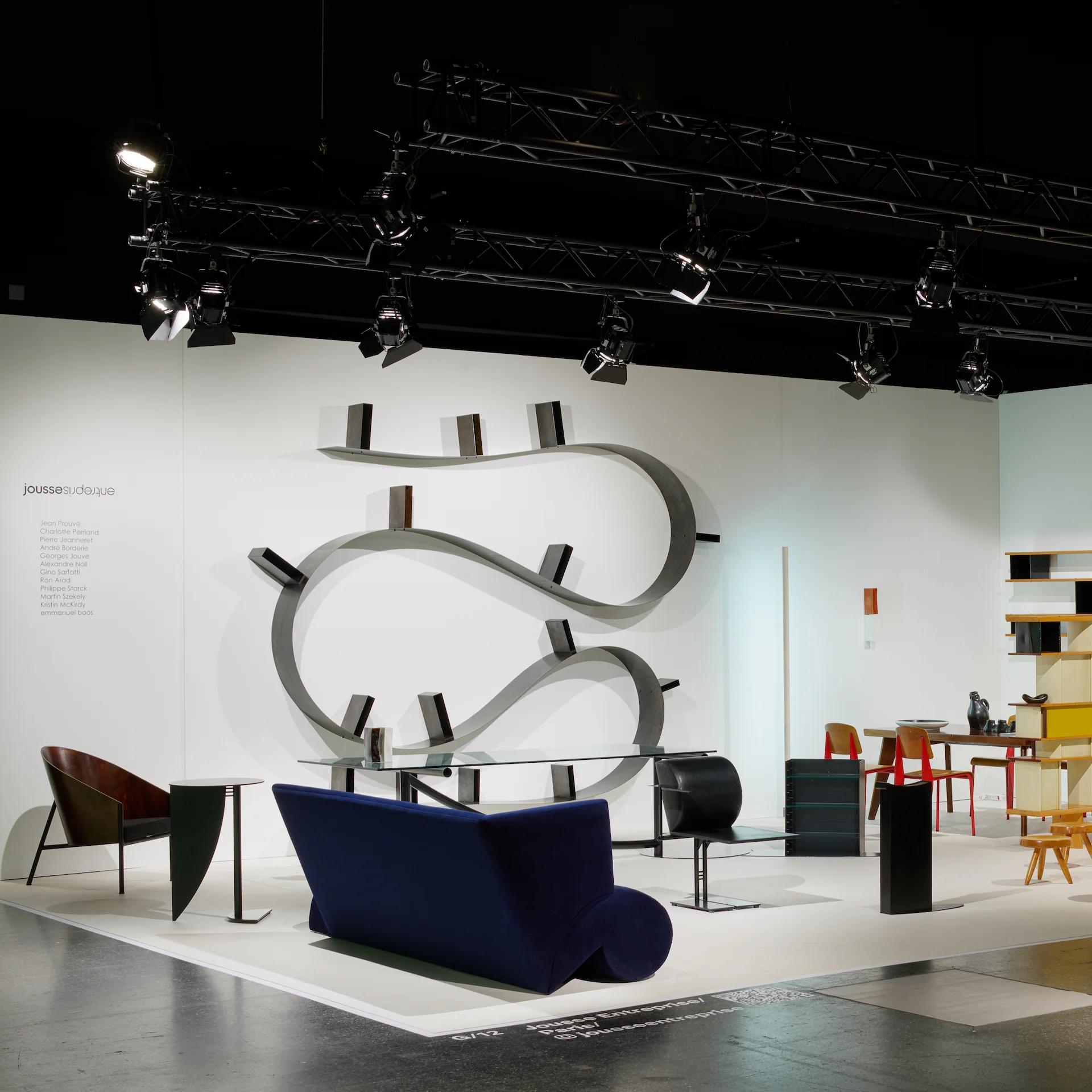
JOUSSE ENTREPRISE AT DESIGN MIAMI/ BASEL 2023, FEATURING LATE 20TH-CENTURY WORKS BY RON ARAD, PHILIPPE STARCK, AND MARTIN SZEKELY ALONGSIDE MID-CENTURY WORKS BY CHARLOTTE PERRIAND AND JEAN PROUVÉ
Photo © James Harris for Design Miami/ Basel
Between 1980 and 2000, design production fractalized and the rules went out the window. Individual practitioners felt increasingly free to pursue their own creative paths, crisscrossing between the territories of art and industry, craft and technology, trend and tradition. The experimental avant garde began to face in all directions at once. Along the way, design galleries and design collecting blossomed—and designers became international superstars.
It should be noted that a handful of galleries exhibiting at Design Miami/Basel 2023 played a vital role in these transformations. Mouvements Modernes, for instance, evolved from Galerie Néotù, a pioneering platform for collectible design founded by Pierre Staudenmeyer in Paris in 1984. Yves Gastou and Philippe Jousse launched their eponymous design galleries in Paris a few years later.
Eager to see some examples of the rich design culture of the ’80s and ’90s? Here are 10 standout pieces on view now at the show.
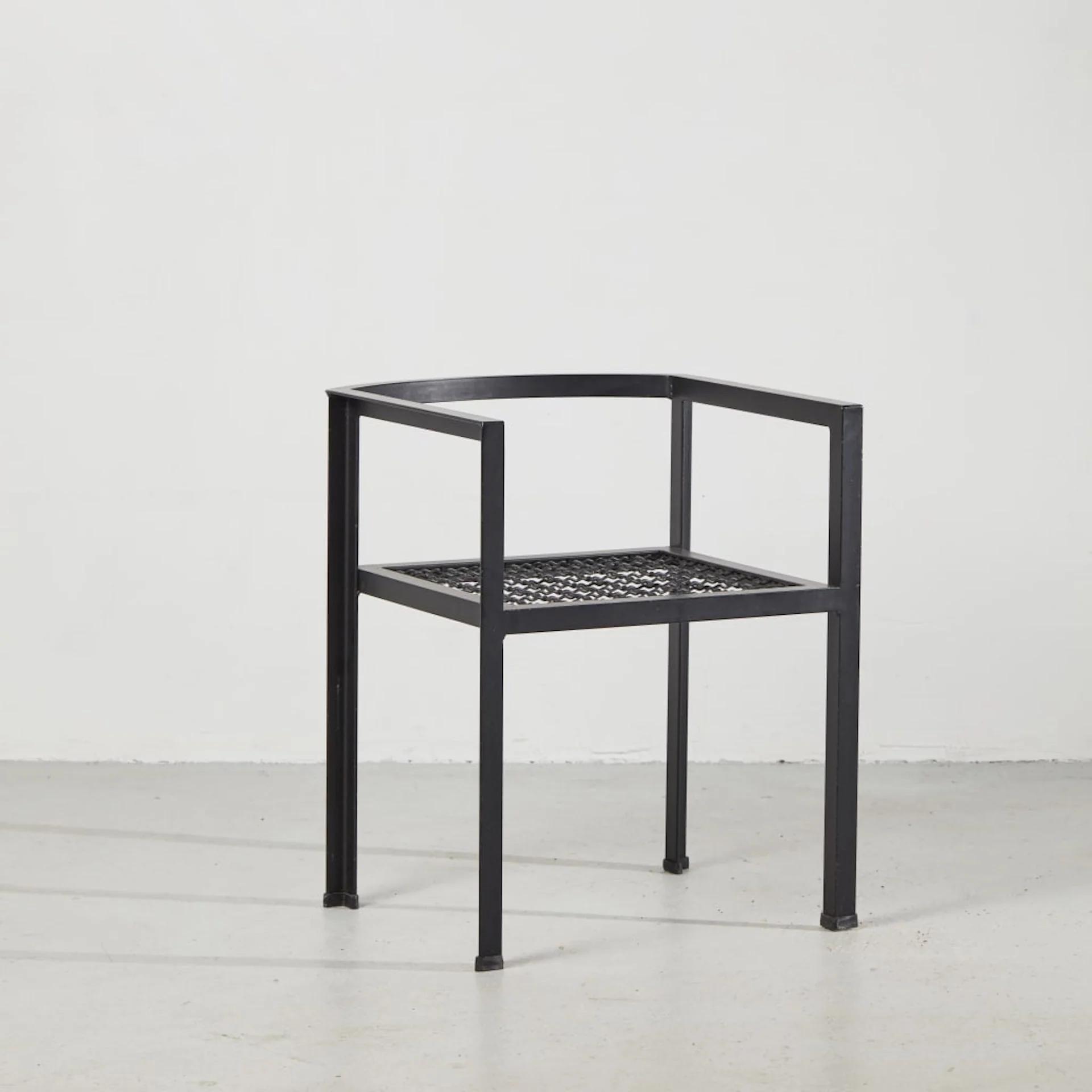
REI KAWAKUBO/ CHAISE N°2,1983/ PRESENTED BY KETABI BOURDET AT DESIGN MIAMI/ BASEL 2023.
Photo © Ketabi Bourdet
Japanese fashion designer Rei Kawakubo showed her first Comme des Garçons collection in Paris in 1981, and the fashion world was never the same. Within a few years, she was opening Comme des Garçons flagships in Paris and New York, the interiors of which she designed to mirror the meticulous, minimal, deconstructed character of her trailblazing apparel. Composed of black lacquered steel with a steel wire seat, her essentialist Chaise n°2 eschews function for mood.
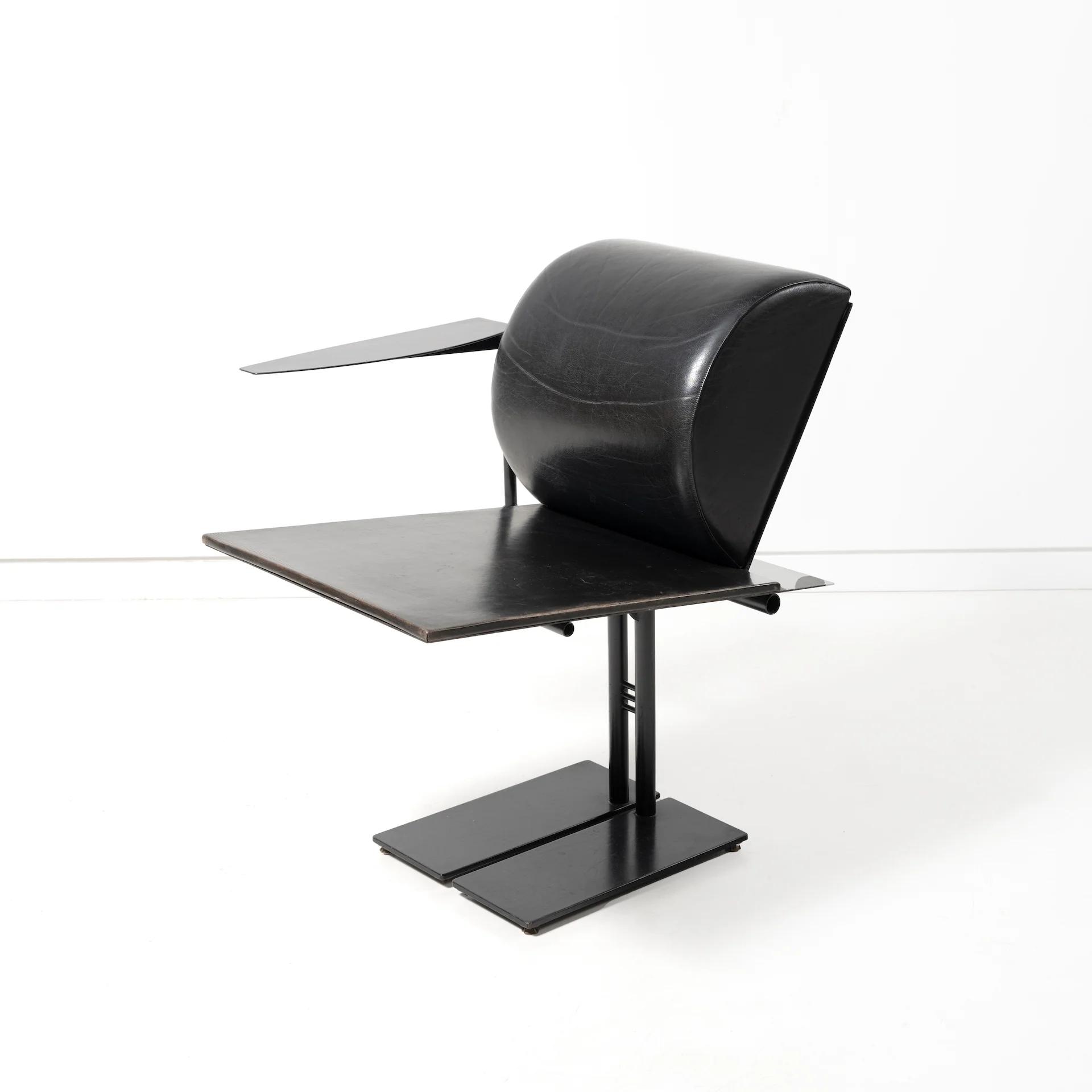
MARTIN SZEKELY/ PI ARMCHAIR, 1983, PRESENTED BY JOUSSE ENTREPRISE AT DESIGN MIAMI/ BASEL 2023.
Photo © Fabrice Gousset; courtesy of Jousse Entreprise
The early 1980s are commonly associated with the exuberant iconoclasm of Ettore Sottsass’ Memphis Group, but French designer Martin Szekely offers another significant example of reductionism in the era. In fact, the radical design movement of the ’60s and ’70s inspired a number of designers to double down on modernist ideals through the end of the century and beyond—Szekely maintains this approach to this day. Edited by Galerie Néotù, the PI collection was among the first major successes of Szekely’s long design career and has become a symbol of France’s resurgent influence on design culture at the end of the 20th century.

GAETANO PESCE/ GREEN STREET CHAIR, 1984, PRESENTED BY KETABI BOURDET AT DESIGN MIAMI/ BASEL 2023
Photo © Ketabi Bourdet
In the 1980s, Italian architect-designer Gaetano Pesce was in his forties and had already achieved an international reputation for experimentation, innovation, and deep, critical thinking. He was sought-after especially for his inventive, expressive work with moldable resins, foams, and plastics. Case in point: his multi-legged Green Street Chair, named for the address of his New York City studio. In 1987, the historically modernist German manufacturing brand Vitra decided to explore the emergent world of limited-edition design and launched the Vitra Editions program. Pesce’s Green Street Chair was included in the debut collection.
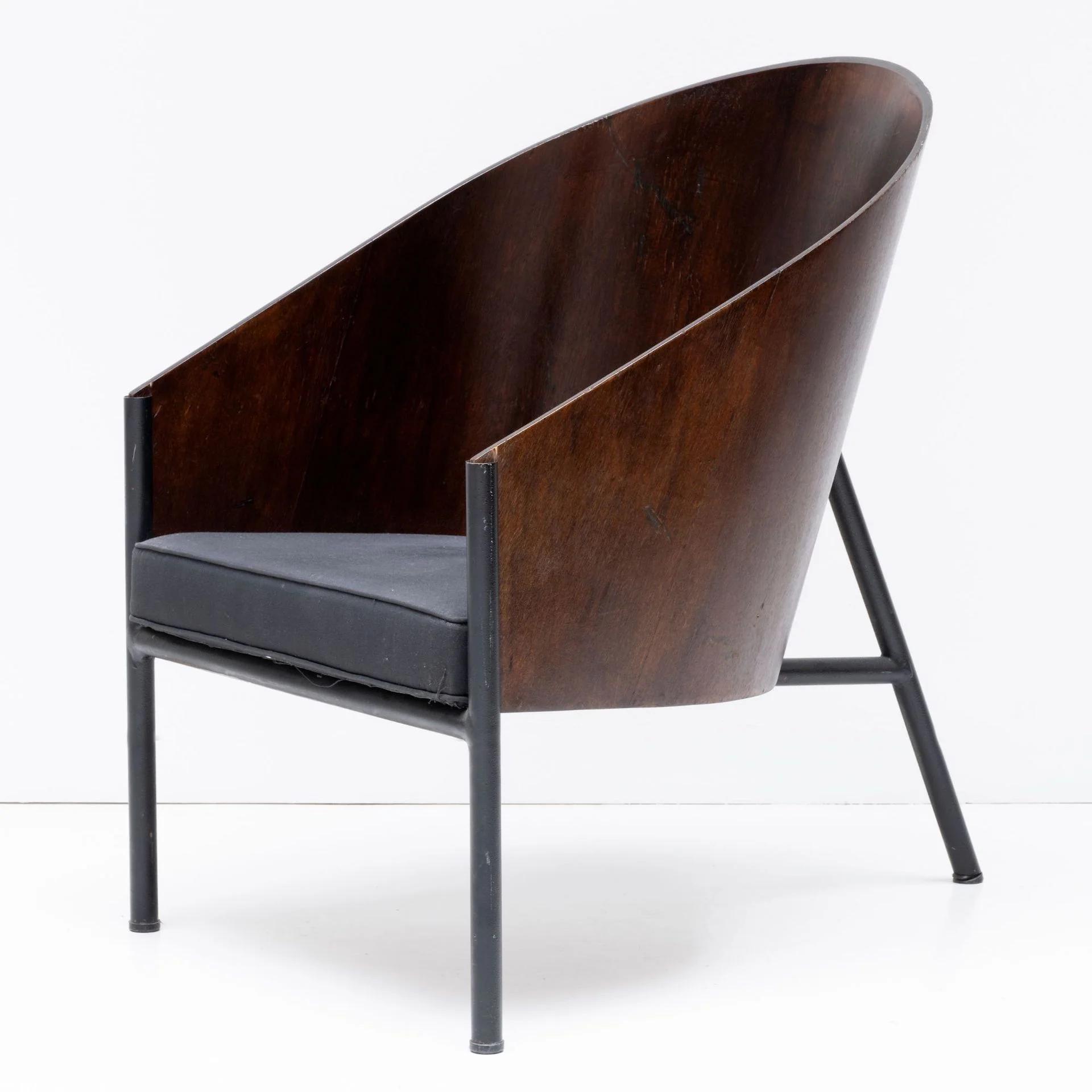
PHILIPPE STARCK/ PRATFALL ARMCHAIR, 1984, PRESENTED BY JOUSSE ENTREPRISE AT DESIGN MIAMI/ BASEL, 2023
Photo © Fabrice Gousset; courtesy of Jousse Entreprise
It’s widely agreed that French designer Philippe Starck was the design world’s first international superstar. In spite of or thanks to his carefully crafted provocateur persona, Starck was invited by President François Mitterrand in 1982 to refresh the private apartments of the Palais de L'Élysée. Designed for the library, this Pratfall Chair prototype calls to mind an Art Deco-era bergere stripped down to its bones and one leg removed, playfully nodding to France’s venerable decorative arts heritage and injecting a bit of fun into the traditionalist idiom. Italian manufacturing brand Driade went on to produce the sleek yet comfortable design from 1985 to 2003—and just announced a few months ago that a re-edition is in the works.
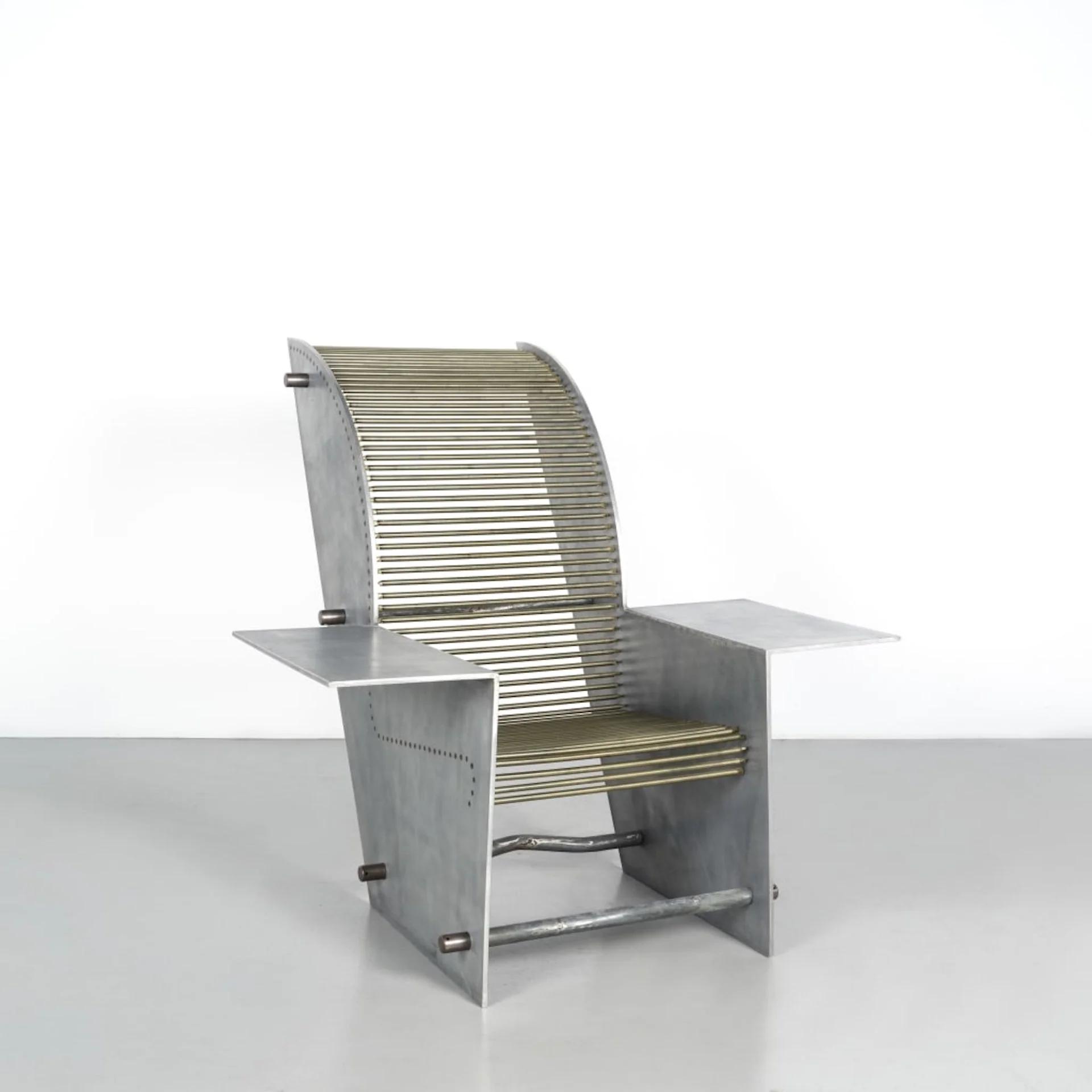
RON ARAD/ HORNS ARMCHAIR, 1985, PRESENTED BY FRIEDMAN BENDA AT DESIGN MIAMI/ BASEL, 2023
Photo © Daniel Kukla; courtesy of Friedman Benda & Rod Arad
“Creative Salvage” is the movement name retroactively applied to the early productions of Israeli-born, London-based architect-designer Ron Arad, together with Tom Dixon, Mark Brazier-Jones, and André Dubreuil, who all worked by hand with found, rough-hewn, and welded materials in London in the 1980s. Arad’s Horns series marked a crucial step for the designer, away from readymade assemblages toward increasingly refined fabrications—while still exemplifying the post industrial, punk rock spirit of this unique moment in design history.

VALENTINE SCHLEGEL/ FREEFORM TRIPOD COFFEE TABLE, PRESENTED BY GALERIE GASTOU AT DESIGN MIAMI/ BASEL 2023
Photo © AdrienMillot; courtesy of Galerie Gastou
French ceramic artist Valentine Schlegel was considered a rather obscure figure of 20th-century design culture until around 2017, when a retrospective was organized by the CAC Brétigny in Paris. The show coalesced an enthusiastic new generation of admirers around Schlegel’s unique and spirited work, which included ceramic vessels, wooden utensils, leather bags, plaster fireplaces, and the interior of her Parisian home, produced over the course of her five-decade career before she passed away in 2021 at the age of 96. Schlegel created this Freeform Tripod Coffee Table for her home in 1986. It stands today as a testament to her aptitude for sculptural, organic forms, the reflection of which can be seen in the contemporary work of Rogan Gregory and Simone Bodmer-Turner, among others.
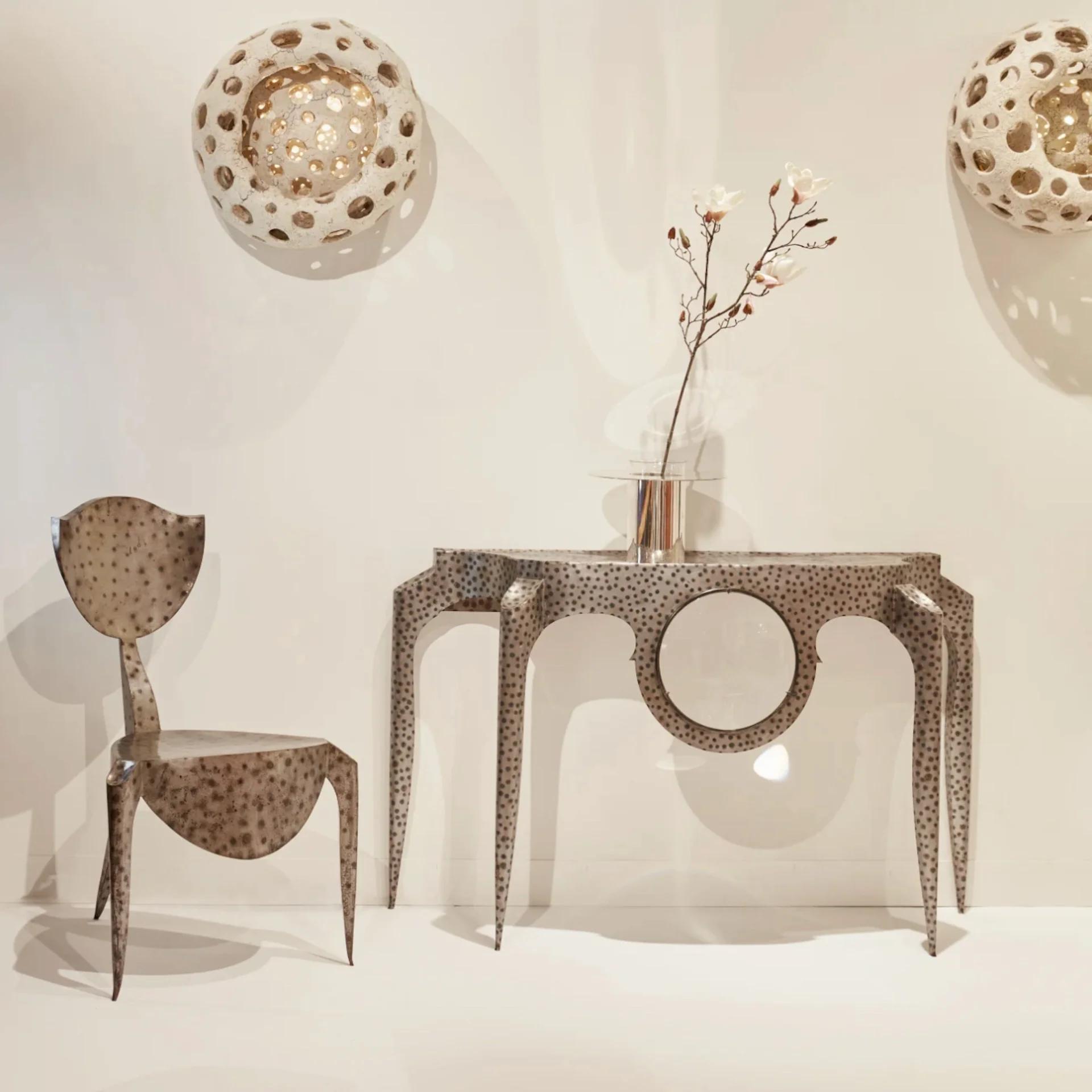
ANDRÉ DUBREUIL/ PARIS CHAISE & CONSOLE, 1988, PRESENTED BY GALERIE GASTOU AT DESIGN MIAMI/ BASEL
Photo © Galerie Gastou
As noted above, the early work of French-born, London-based ‘‘Poet of Iron’’ André Dubreuil has been grouped in with the “Creative Salvage” movement. In this era, the self-taught ironworker embraced a rough-and-ready, brutalistic aesthetic. But unlike his contemporaries, he also played with historicist forms to surreal effect. Dubreuil’s Paris series—unveiled in his debut gallery show organized by Yves Gastou in 1988—revisits 18th and 19th-century furniture traditions, rendered entirely in metal and emblazoned with leopard-like spots.

GAROUSTE & BONETTI/ CORBEILLE SOFA, 1989, PRESENTED BY MOUVEMENTS MODERNES AT DESIGN MIAMI/ BASEL 2023
Photo © James Harris for Design Miami/ Basel
French interior designer Élisabeth Garouste and Swiss artist-designer Mattia Bonetti joined forces in Paris in the early 1980s and became influential proponents in the era’s “art furniture” movement. The duo quickly attracted representation from Galerie Néotù as well as buzzworthy commissions, like the restaurant of the legendary Paris nightclub Le Palace. Their Corbeille Sofa showcases their talent for creating sumptuous, exquisitely crafted conversation pieces that command attention through striking theatricality.
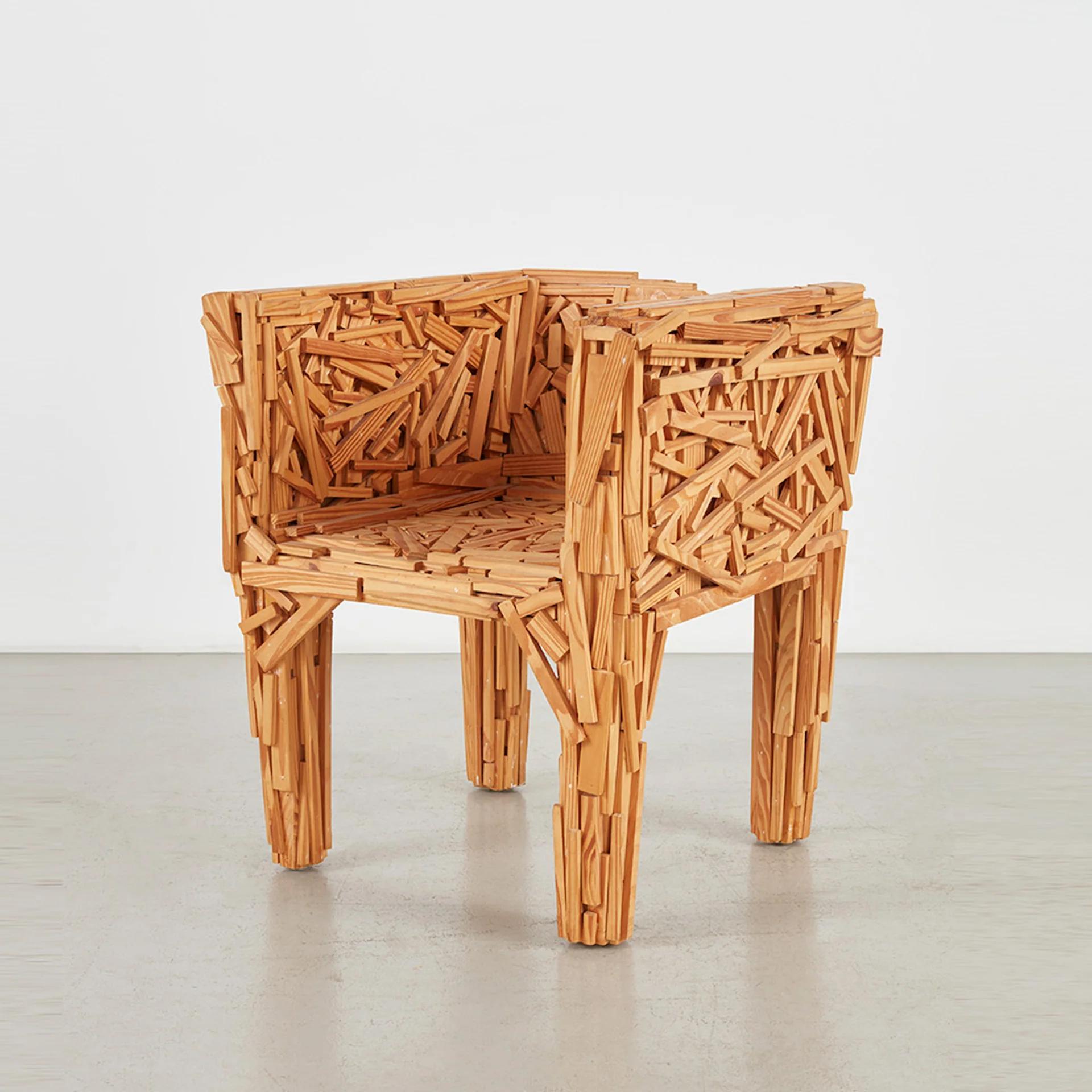
THE CAMPANA BROTHERS/ FAVELA ARMCHAIR, 1991, PRESENTED BY FRIEDMAN BENDA AT DESIGN MIAMI/ BASEL 2023.
Photo © Friedman Benda
Brazilian brothers Fernando and Humberto Campana rose to international prominence in the late 1980s through a series of delightful design objects that took upcycling to an expected new level, elevating everyday and found materials to treasured works of art. Inspired by the improvised constructions of working-class neighborhoods around São Paulo, the Campanas’ now iconic Favela Armchair is composed of hundreds of simple, wooden laths nailed and glued at odd angles to form the seat, back, and legs of this surprisingly comfortable chair.
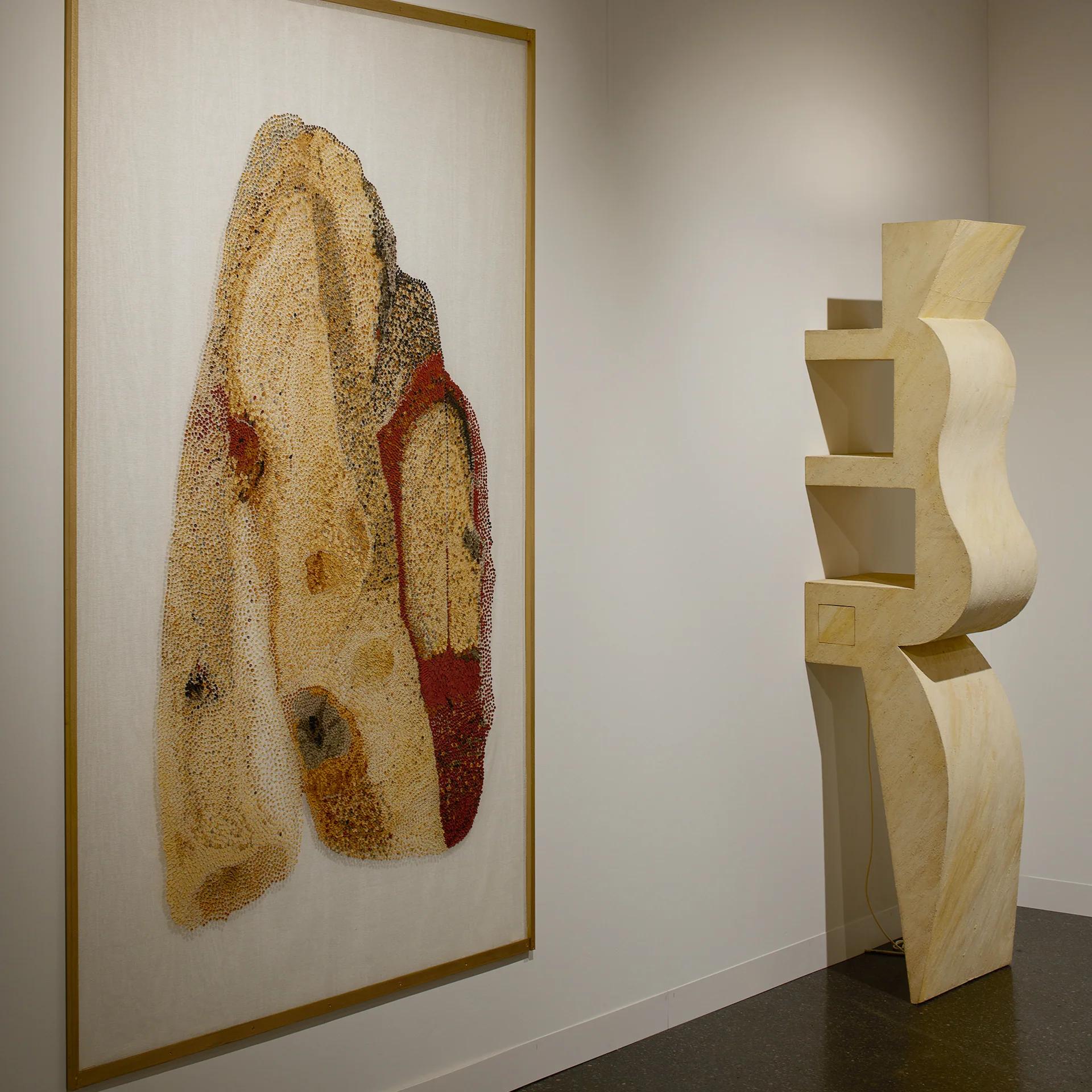
PUCCI DE ROSSI/ RENARD I - FOX CRAMPING ILLUMINATED BOOKCASE, 1991, PRESENTED BY MOUVEMENTS MODERNES AT DESIGN MIAMI/ BASEL 2023
Photo © James Harris for Design Miami/ Basel
Italian-born, Paris-based visual artist Pucci De Rossi in the 1980s and ’90s was represented by the legendary Galerie Néotù and specialized in crafting whimsical, historicist, and occasionally kitschy designs that straddled the line between furniture and sculpture. Exuding a joyful charm, his work in these years often incorporated unexpected details. This piece, for example, can lean upright against a wall like a bookcase, or lie supine on the floor like a table. Alongside others mentioned in this roundup, his work was spotlighted in the Musée des Arts Décoratifs’ recent exhibition, Années 80. ◆
The 17th edition of Design Miami/ Basel is open to the public through June 18, 2023. Tickets are available for purchase online here.
